B-29 Doc at Lone Star Flight Museum - May 5th, 2021

The B-29 known as Doc visits the Lone Star Flight Museum at Ellington Field May 5-9, 2021

Say hello to "Doc" built at Wichita, Kansas in March of 1945, B-29 No. 44-69972, one of only two flying B-29s left (Fifi in Dallas, TX)

The aircraft never saw combat, and was converted to a radar calibration aircraft in 1951 and based at Griffiss Air Force Base, New York

Squadron members at Griffiss named their B-29s after characters in the Disney movie Snow White and the Seven Dwarfs and 44-69972 became Doc

The aircraft, modified as a TB-29, was moved to Yuma County Airport in Arizona in 1955 to be used as a target tug

Was retired from the United States Air Force in 1956 and sent to the Naval Air Weapons Station China Lake for use as a ballistic missile target

Doc sat in the Mojave Desert for 42 years serving as a target for the U.S. Navy

In 1987, Tony Mazzolini found Doc and began plans to remove and eventually restore the B-29 warbird to flying status

It would take another 12 years before Mazzolini and his team would take possession of the airplane from the U.S. government

Doc returned to Wichita in sections on flatbed trailers in May of 2000, sitting a few hundred feet from where it first rolled off the assembly line some 50+ years before

Back to Doc's history in a moment, here is the Landing/Takeoff skid plate to keep the tail from dragging on the runway
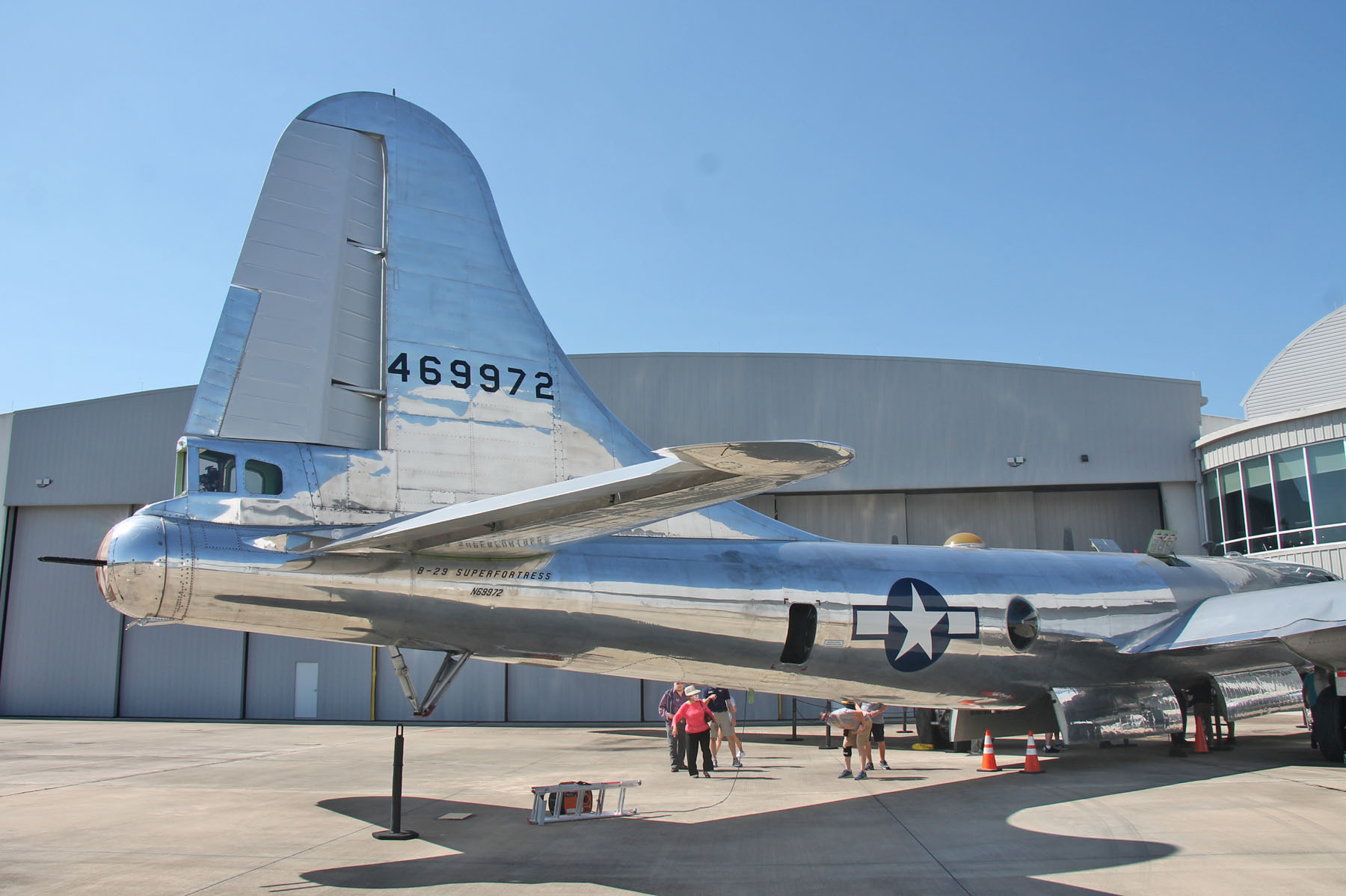
Next, look inside the open crew entry door behind the US Star emblem

Look inside the crew entry door opening toward the tail

Looking right at the open pressure bulkhead access door that leads forward

Move forward and next peek inside the gun aiming blister window

Upper gunner's seat with gun aiming blister above with lower rightside opening to the bomb bay and upper opening is the pressurized tunnel to the front cabin

In 2000, volunteers began the process of reassembling the B-29 and drew up plans to restore the historic warbird

Wichita aviation enthusiasts & business leaders formed Doc’s Friends in 2013, a non-profit board, to manage and complete its restoration

Doc was declared airworthy in June 2016 and made its first flight July 17, 2016

Doc attends eight air shows in four states in 2017 attracting record crowds

Ground was broken for Doc's future home in September 2017, construction began in March 2018, completed in November 2018 and opened to the public in January 2019

We will take a peak inside by entering through the forward bomb bay

Stand up in the bomb bay and will enter through the forward cabin rear pressure bulkhead

Check out the sample bombs to the left while waiting, a 500 pound and 250 pound bomb

Bigger bomb to the right but no writing identifying it

Stick my camera inside while a crewman discusses the bomber with three guests who will exit throught that forward hatch

View the radio operator's seat in the rear left before entering the front crew cabin

Step inside and look down the pressurized tunnel connecting the front and rear crew cabins

Observation window directly above the entrance to the pressurized tunnel

Turn around and view the pilot's seat left, bombardier station forward and copilot's seat on the right

Zoom toward the bombardier station forward

Pilot's station
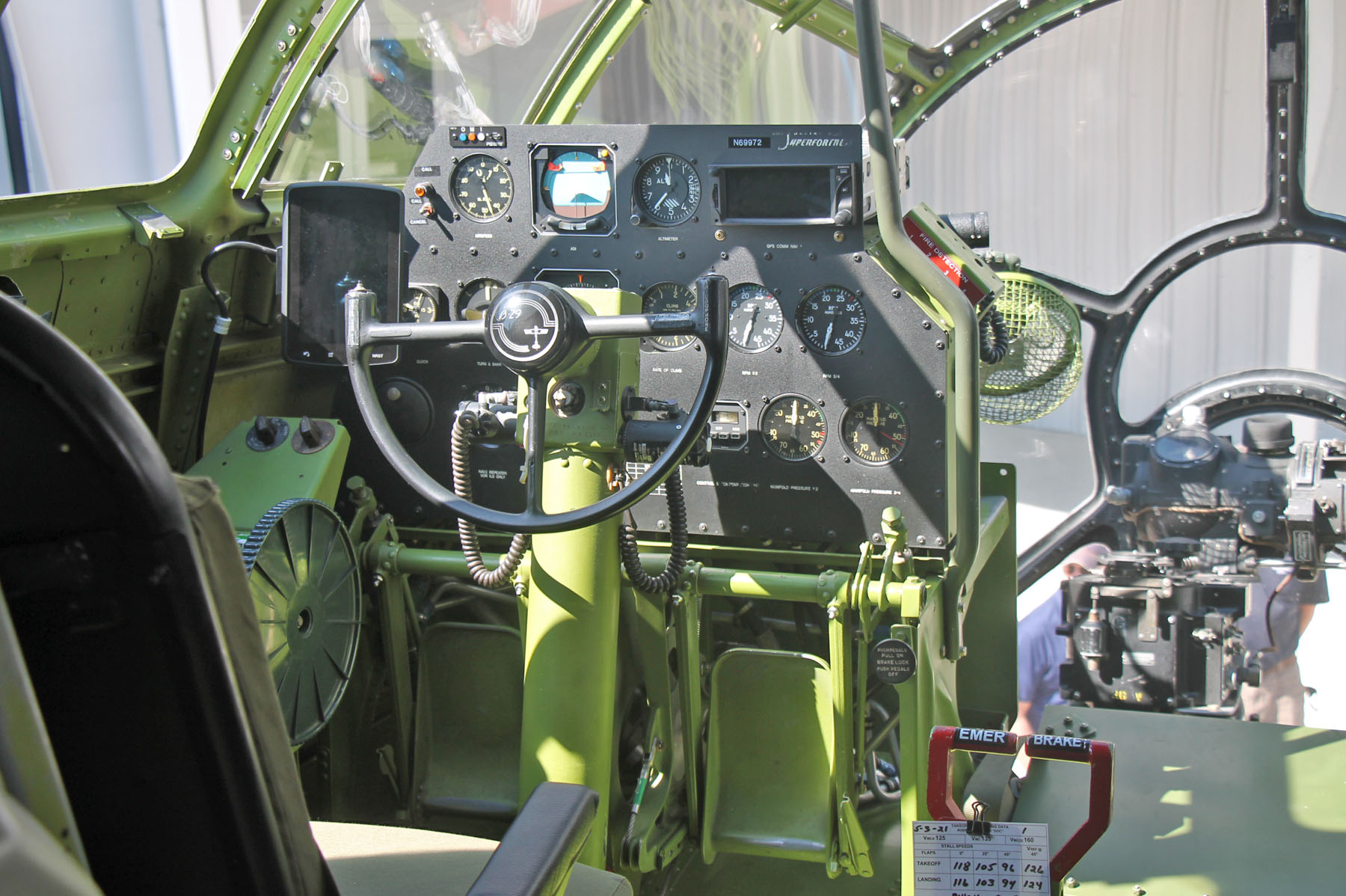
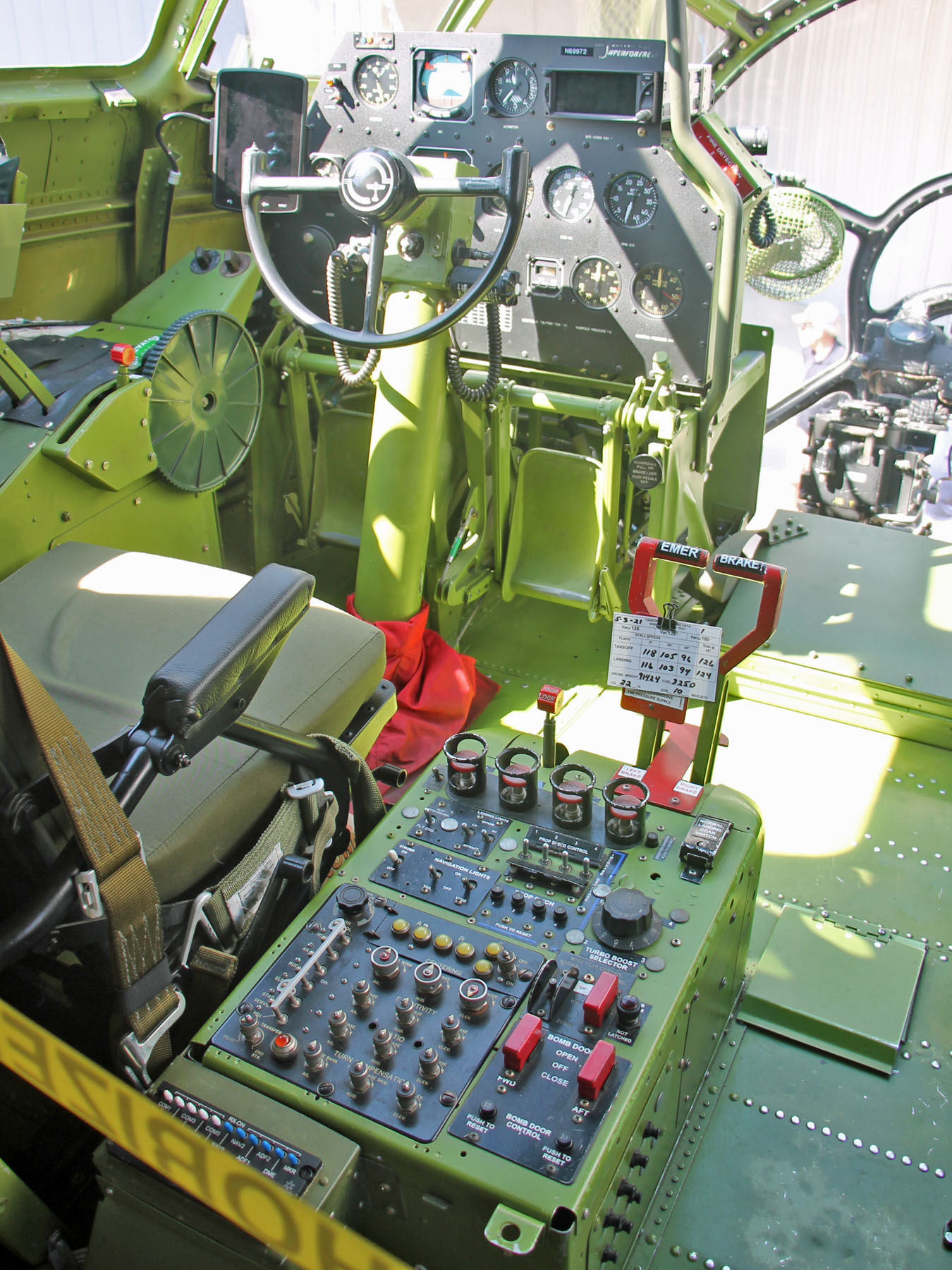

Copilot's station

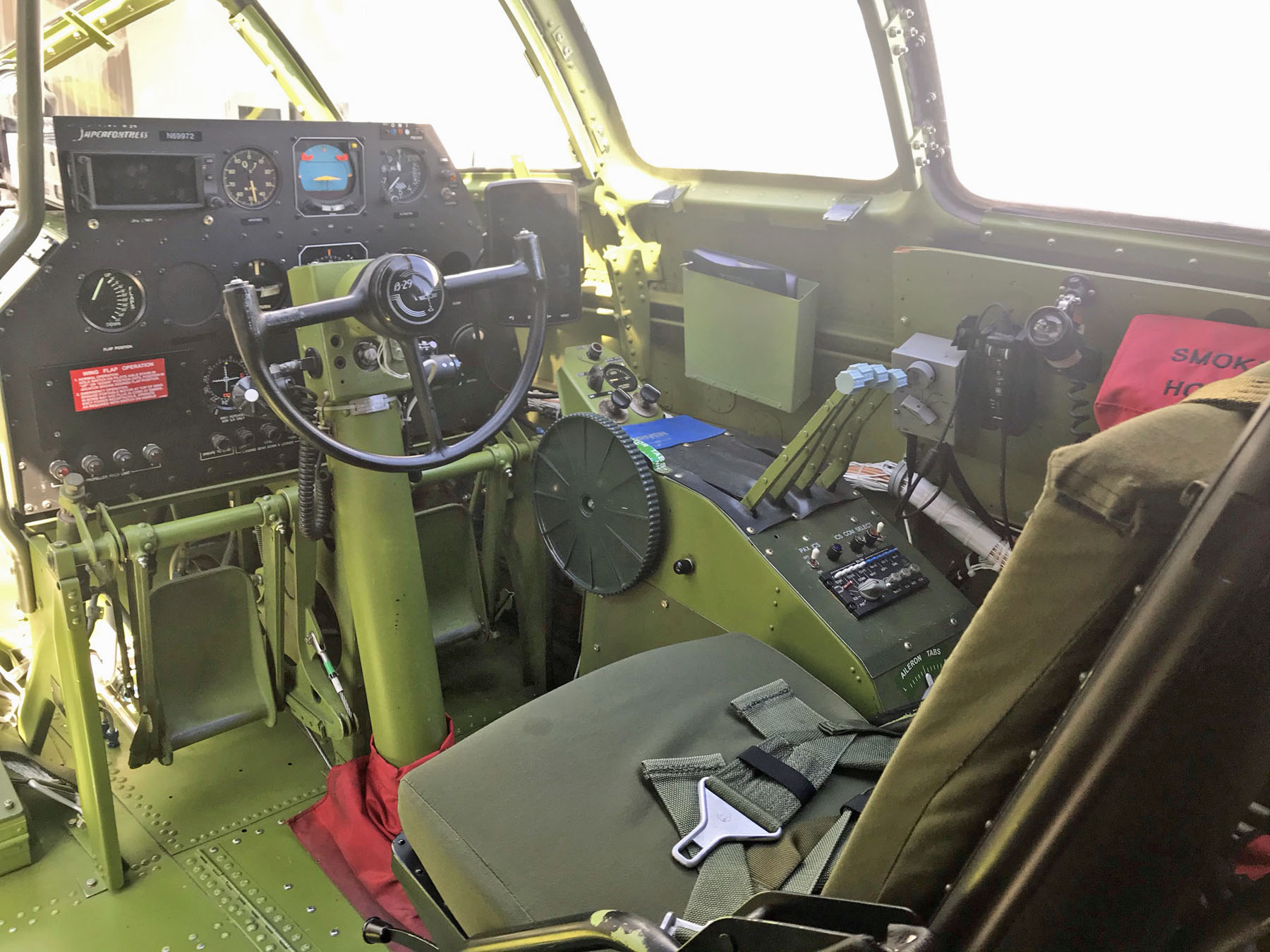

Flight engineer's station

Flight engineer controls cabin pressure, engine throttle and controls the panic button on the left

Plenty of guages at the flight engineer's station

More flight engineer controls

Radio Operator's station

Radio Operator's radio!

Navigator's seat

Glad I came early because there is a big crowd when I exit the aircraft

Go inside and see the aircraft of the Lone Star Flight Museum, first is a Boeing-Stearman PT-17 Kaydet primary trainer built before 1945

Cessna T-41 Mescalero, military version of a Cessna 172, built for the US Army in 1967

Boeing-Stearman N2S Kaydet, navy version of the Stearman built before 1945

This McDonnell-Douglas F-4D Phantom II is the only civilian owned F-4 flying in the US on loan from the Collings Foundation

Piper L-4 Grasshopper built during WWII, the civilian version is the Piper J-3 Cub

The last of five built Anderson Greenwood AG-14 two seat pusher aircraft, built in 1953

North American SNJ-5 Texan having an engine overhaul

The SNJ-5 Texan is painted in the 1950s color scheme of the 147th Fighter Group of the Texas Air National Guard based here at Ellington Field

Piper J-3 Cub built in 1940 and owned by the LSFM President and COO

Fairchild PT-19 Cornell monoplane primary trainer built in 1941

Vultee BT-13 Valiant built in 1944 as SNV-2 to train naval aviators for the US Navy

A new arrival as there is no sign identifying the aircraft, so search the internet for the tail number

The star of this hangar is the North American B-25J Mitchell Bomber

The only flying B-25 painted in the colors of the Doolittle Raiders and is the official B-25 of the Doolittle Raider Association

This B-25 remained stateside during World War II, a USAF trainer until the late 1950s. Acquired by the CIA and flew covert missions during the Bay of Pigs invasion

Model of tail number 02344 taking off from the aircraft carrier Hornet on April 18, 1942 on a daring raid against mainland Japan

Sixteen B-25 Mitchells launched from the Hornet and 77 of 80 crew members survived the mission

Climb above to look down on the Vultee BT-13 Valiant, Fairchild PT-19 Cornell, Piper J-3 Cub and North American B-25J Mitchell

Piper J-3 Cub, North American SNJ-5 Texan and Anderson Greenwood AG-14

Sweet North American B-25J Mitchell painted as a Doolittle Raider

McDonnell-Douglas F-4D Phantom II and a Boeing-Stearman N2S Kaydet

Cessna T-41 Mescalero, Boeing-Stearman PT-17 and Vultee SNV-2 Valiant

Walk to the second hanger and look down on a Messerschmitt Me-262 Schwalbe, Lockheed T-33A Shooting Star and Howard 250 Tri-Gear

Douglas DC-3A with Mooney M-18 Mite and a 1911 Curtiss A-1 Triad under the right wing

Douglas SBD Dauntless, Chance Vought F4U Corsair, GM TBM-3E Avenger, Beechcraft Baron B-58, Globe GC-1B Swift and Sikorsky S-76A

Go down to the hangar floor and check out the reproduction Messerschmitt Me-262 Schwalbe

It uses two modern GE CJ-610 engines and is on loan to the LSFM by the Collings Foundation

Lockheed T-33A Shooting Star built in 1951 as America's first jet trainer

Howard 250 Tri-Gear is a Lockheed L-18 Loadstar built as an executive aircraft in the 1950's
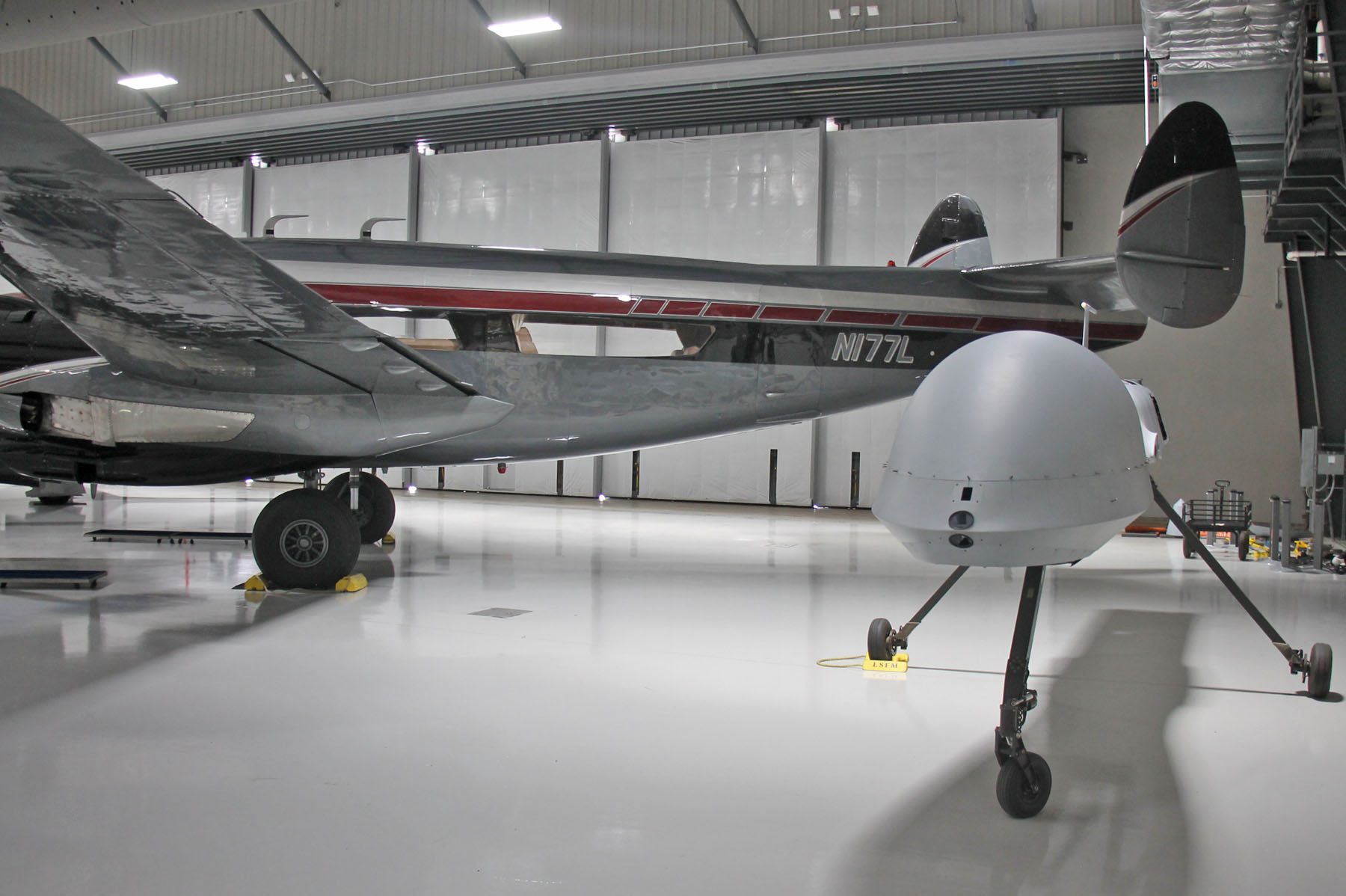
View the executive seating of the Howard 250 beyond the disassembled MQ-1 Predator UAV

Douglas DC-3A built in 1940 for American Airlines

It was purchased by Trans-Texas Airways (predecessor to Continental Airlines) after WWII

Continental Airlines bought it from another airline in 1980 and flew it as a public relations aircraft; It was donated to LSFM in 2004

Mooney M-18 Mite left uncovered to show internal layout and operating systems, built before 1955

Replica 1911 Curtiss A-1 Triad, was the first aircraft purchased by the US Navy and could land on water or land

Sikorsky S-76A built in 1979, used for oil exploration transport and retired in 2016

Globe GC-1B Swift built in 1946, completely rebuilt and modernized in 2011

Beechcraft Baron B-58 built in 1978 in Wichita, Kansas
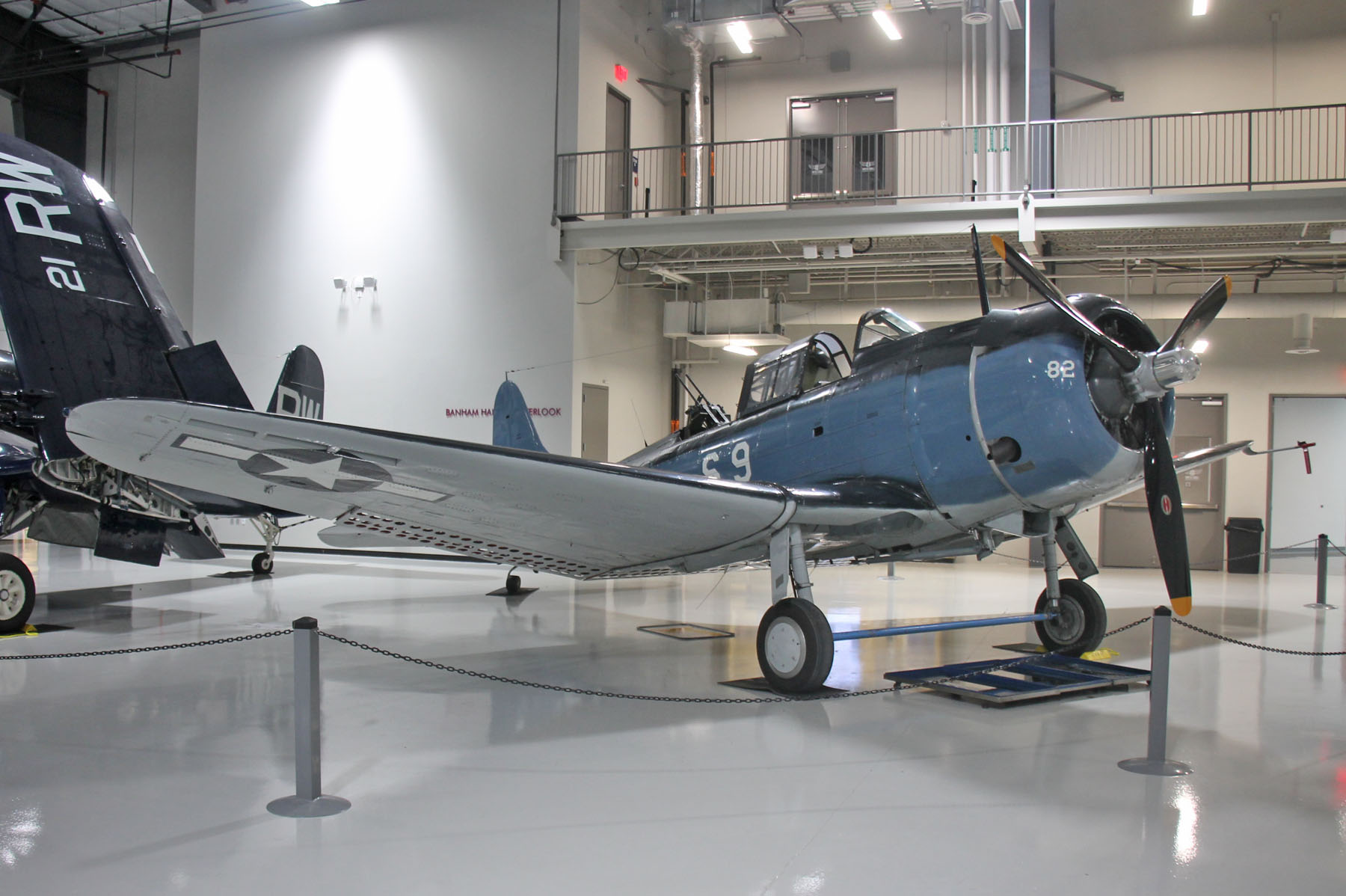

Chance Vought F4U-5N Corsair built as night fighter for Argentina and later an outdoor display for 30 years

General Motors TBM-3E Avenger built in June 1945 and retired in 1953

This enormous torpedo bomber was used as a crop duster from 1965 to 1988, when restored by the Erickson Aviation Collection

The last two photos are of San Antonio's Randolph Field

I had not seen photos of it before and was impressed it was built in a circle formation
While looking online to find a diagram of the B-29 to help me identify what I was taking photos of, I found the Cockpit360 Images of the National Museum of the US Air Force at Wright-Patterson. They have cockpit photos of all their aircraft you can rotate and see the entire cockpit.
Here are direct links to the B-29's Pilot Station, Bombardier Station and Radio Operator Station.